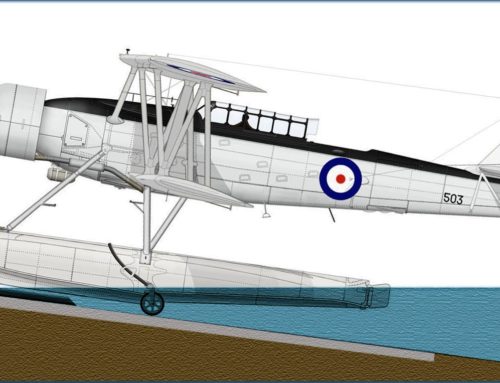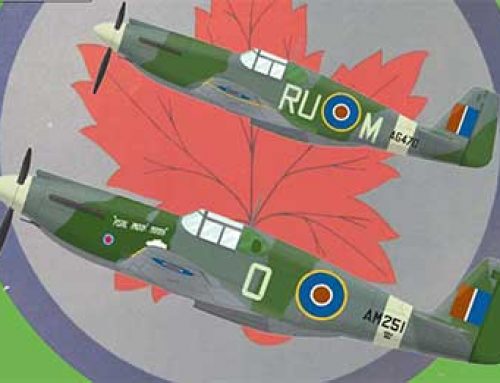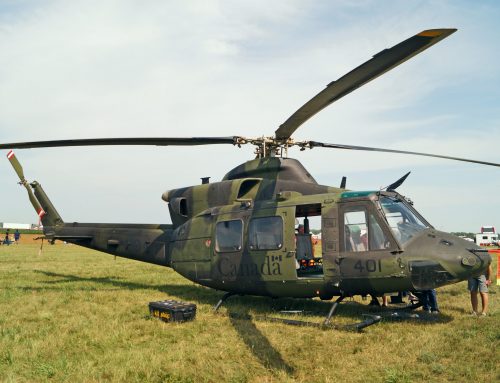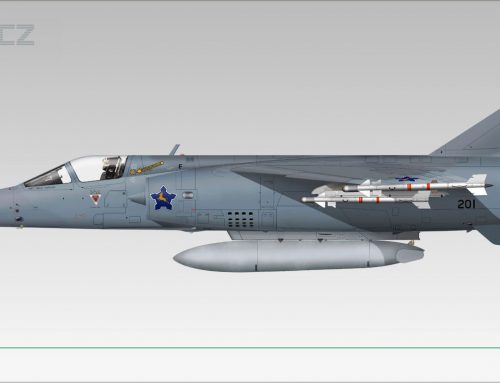I need help, because….
Sat Oct 11 14:17:43 2003
I want to build the Tamiya Spitfire Mk.Vb in 1/48th as a D-Day machine (using the excellent new Model Alliance book as a source). The aircraft I want to model has clipped wings, late Mk.IX exhaust stubs, coded AZ*B, BL415.
BUT, has it the wing-strengthening bars over the wheel bays?? Also, are these post-war additions to restored airframes?? Thanks in advance from all you Spitfire experts.
Roy Sutherland
Spitfire wheelbay details
Sat Oct 11 19:01:27 2003
From what I remember doing the research on building Jeffrey Northcott’s EP120 (which still flies and does have the main wheel bay skin stiffeners) some Mk.Vbs have it and some don’t. Why? I couldn’t tell you. Check photos of your subject if you are lucky enough to have one that shows this detail. Few do!
There seems to be no hard and fast rules about the Spitfire, though, and endless variations can be found when you really study wartime pictures.
Graham Boak
Almost certainly
Sat Oct 11 16:08:00 2003
As these were a wartime addition to compensate for the structural weakness above the wheelbay on the ‘a’ and ‘b’ wings.
It would be astonishing if they were not there.
Edgar Brooks
Sat Oct 11 16:11:18 2003
The Mk.I, based near me, has wing stiffeners, on one wing replaced during the war, and, in a recent article in Air Enthusiast (no. 95,) there is at least one photo of an early Mk.IX conversion with wing stiffeners, BR143 of 316 Squadron.
Derek Pennington
Sat Oct 11 16:53:48 2003
According to the Bible (Spitfire, The History), Mod 455 was incorporated on 10/10/41, to stiffen wheel well top skin. This was for the Mk.V. Whether this meant stiffeners, or just a thick gauge metal is unknown, but a gut reaction says it would have been the stiffeners. I have read somewhere that this was retro-actively applied to aircraft at OTUs, which included Mk.IIs.
See page 171, under modifications to Mk.V
Tim Mayberry
Spit. “Wing Stiffening Rails” – a Big Fat Lie?
Sat Oct 11 21:48:47 2003
I’m boppin’ along, working on my second Spitfire of the month, modifying the Tamiya 1/48 Mk.Vb to the Mk.IIb. I note the instructions read to remove the two raised lines on each of the wings. I start to wonder, what’s the story here, are they just for the Mk.I? If so, why aren’t they on the Tamiya Mk.I wings? So I break both the Aero Detail early Spitfire book, and the SAM Datafile for the Spitfire. Both books have photos & captions of the “wing reinforcement strakes” over the wheel well area of the upper wings. They’re even shown & labelled in both the 1/48 scale drawings for the Mk.I. Yet, I’m sensing there’s something Rotten in Denmark …
I check out Brett’s review of the Tamiya Mk.Vb, and he writes that the strakes were simply a “museum feature.” Sure enough, in all the wartime photos Spits. in my references, these ribs are nowhere to be found.
I’ve been duped! Or, I was almost duped! What’s interesting is that there are two different Spits. shown in the Aero Detail book that both have the ribs.
So were these things ever used? Or were they just done in museums, and then photographed & documented as fact?
Just goes to show, you can’t always trust museum photos!
Bob Swaddling
Retrofitted strengthening strakes
Sat Oct 11 22:22:06 2003
Hi Tim,
Unless you are building a model of a museum a/c, don’t use one for reliable wartime reference without having a wartime photo to go by. Spitfire “a” and “b” wings were retrofitted with the strengthening strakes and a/c that survived still had them. I have even tried to explain this to Fine Scale Models with their “no compromise” high priced metal model Spitfire Mk.Ia. They are depicting DW-K as a Battle of Britain Spitfire and yet have the strakes added. If I remember correctly, the strakes were added in November 1941, according to Spitfire the History. The “c” wing didn’t need them but, as was pointed out to me this past week, there is a photo of a Mk IX with the strakes in place. Goes to show you, reference photos are best.
The two books that you are referring to are not the best either. Great photos in the Aero Detail book, but of museum a/c, one with boards across the seat so a visitor could sit in a Spitfire. Too bad Trumpeter took that to be how Spitfire seats were made and copied the boards.
The SAM Dataphile book is nice but be careful of the drawings especially the smaller ones that explain the differences in the Marks. Very misleading and some just downright wrong.
Graham Boak
On operational aircraft too
Mon Oct 13 03:16:39 2003
You can see them on the LF Mk.Vbs that were used as late as September 1944. Of course many of these airframes were high-life by then (Clipped, cropped and clapped).
By mid-late 1942 no Mk.I or II, and a reducing number of Vb, remained in the front line, so it’s no wonder that these stiffeners are most often seen on OTU or hack aircraft.
I don’t recall ever seeing any on overseas Mk.Vbs – comments anyone? This could imply that they were added to aircraft at MUs on refits after an initial time in service, rather than a “must apply soonest” on front-line aircraft.
Steve Hawley
War Time Mk Vb Photo
Sun Oct 12 11:54:01 2003

Jim G.
Stiffeners on “high time” airframes?
Mon Oct 13 00:59:24 2003
I thought that the stiffeners were applied to high-time (war weary) airframes that were used at OTU’s and as “hacks”, but not on operational aircraft. I think I have seen a photo taken from a different angle of the same Spitfire Mk.V that Steve Hawley posted a photo of. It was identified as an 8th Fighter or Bomber Command “hack”.
Edgar Brooks
Stiffeners
Sun Oct 12 14:05:33 2003
There were three mods to the Mk.V production line, all designed to stiffen the upper surface. This came up a day or so ago, and I’ve posted a fuller answer there. I’m guessing that it was a mod specially for the Mk.V, but any I or II, needing a new wing, would have received one, too.
Bob Swaddling
Sun Oct 12 22:18:12 2003
Hi Edgar,
Check out the Shuttleworth collection’s Spitfire Mk.Vc. It even has the strengthening strakes. I don’t know why, but they are on there. I do know that AR501 was the main Spitfire that was the pattern for Tamiya’s Mk.V, but don’t know why they made it into a “b” wing rather than a “c” which would have made more sense since Hasegawa and Airfix already had Mk.Vb’s in 1/48th scale.
Graham Boak
Date – that’s why.
Sun Oct 12 03:08:32 2003
Most Mk.Vbs were built before the mod was introduced, that’s why you won’t see it on many photos – it wasn’t there then. But the original request was for a 1944 LF Mk.V, and that’s a very different matter.
This business of having one on a Mk.IX is very odd, for the Mk.IXs all had the c wing, which had thicker skins the wheelwell. So you won’t see these strakes on Mk.Vcs either.
Len Thomson
Strenthening strakes on Spit wings
Sun Oct 12 12:09:10 2003
Hi Graham,
I agree with everything you say, but…..
I bought a book the other week, which clearly show a Spit Mk.IX (one of the converted Mk.Vs), complete with c wing, which DID have the strengthening strakes over the whell wells. It sure surprised me too. I thought that the strakes were a feature of the a and b wings only. Contact me off board and I can let you have a copy.
Just goes to show that there are always surprises with the Spit.
Graham Boak
And the Shuttleworth Mk.Vc….
Mon Oct 13 03:34:04 2003
though I don’t think that restored aircraft really count!
The other point of course is that the Spitfire wings were still weak in the root, as exposed when the pointy-winged Mk.VIIs and VIIIs tried dogfighting at lower altitudes. It could be that individual examples acquired these stiffeners as a “belts and braces” approach, perhaps after signs of local overstressing were found?
Edgar Brooks
Wing strengthening
Sun Oct 12 13:08:21 2003
The wording of mod 455 is interesting; “To stiffen wheel-well top skin,” but the increase in weight was only .3 of a pound. 5 ounces sounds like thicker material, only, to me. However, two other mods were, also, introduced into the Mk.V production line; 529, also “To stiffen wheel well top skin,” for the Mk.Vc only, increased the weight by 4.8 pounds, much more feasible with lumps of metal on the top surface.
Another mod, 532, with the same spec., was introduced to the Mk.Va & Vb, with a weight gain of 6.3 pounds. I hate trying to make assumptions, but it could be that the thicker skin didn’t work, so a temporary ‘fix’ was applied, using stiffening bars, not all the same size.
These mods appear in “The Spitfire V Manual,” which was printed, for the RAF Museum , in 1976, and are mods which were approved before February 1st, 1945 . My guess is that, by the time of the Mk.IX, a better system had been found, rather like the stiffeners inside the wheel wells of the 22/24, perhaps.
A proper perusal of the drawings would be best, but, when I last heard, the RAF Museum still hadn’t sorted out the Spitfire drawings.
Graham Boak
But where were the mods applied?
Sun Oct 12 15:35:33 2003
A thicker skin would be applied on the production line only – a reskinning of a wing is not really on for an MU. Not on a wide scale basis. It can’t be done without affecting either the outside lines or the internal structure. However, the attachment of the external stiffeners is a mod that could readily be applied, possibly even at squadron level given a suitable kit. They would not want to be chosen for new aircraft on the production line because of the drag implications.
These strengtheners are only seen (with one known exception) on ‘a’ and ‘b’ wings. They make sense as a retrospective alteration, whereas the skin thickening makes sense as a production line change.
I think that you have this the wrong way around. The skin thickening did work – but could not be applied retrospectively. The external ribs worked too, but were not a preferred option. With mod numbers so close together, there is no time for deciding the first one didn’t work out in practice – they were applied side by side: but to different aircraft in different circumstances.
If that is making an assumption then I’m not very sorry – it makes perfect engineering sense and fits the known data. The one piece I haven’t checked is when the Mk.Vb was superseded in production: I suspect this is before the mod was introduced but don’t think that it affects the logic.
Edgar Brooks
Mods
Sun Oct 12 16:01:22 2003
The first, lightweight, mod 455 was a class 4B mod, as was no. 529, for the Mk.Vc. Looking at the other class 4B mods, also listed, it appears likely that they had to be done during production. Mod 532, for the Mk.Va & Vc, was a class 2 mod, like several others, which seem to be possible after manufacture. Could explain why it was heavier, too.
Look, I’m not saying that these were the mods; I haven’t a clue, but those strakes would have been heavier than a few ounces. Incidentally, the mods for the Mk.V production went up to 1111, and deletion of the rudder pedal straps was only no 1024. If it’s anything like where I work, the number of the mod often bears no relation to the date at which it is introduced.
One thought; as well as the Mk.IX, converted from a Mk.Vc, in the Air Enthusiast article, the Mk.Vc, at Shuttleworth, has the strakes.
Graham Boak
Interesting classification
Mon Oct 13 03:31:13 2003
Is that a type for 532, should it be Mk.Va and Mk.Vb?
I think your comment on the weights was spot-on, and a useful part of the description, but this Class 2/4B is even more interesting. A definition of those would be very helpful.
Dates: it’ll relate to the date the man wrote it into the Mods Book. This could either be the date of acceptance or even the date of conception – probably the latter as some reference will be needed for the preliminary work and drawings. Of course neither could be close to the date of introduction. Some mods may take quite a while between the idea and the acceptance of it, others may take longer to prepare. I still think that close numbers imply that they were being worked on in the design team at much the same times, regardless of when they reached the field.
(thanks to Brett Green for permission)





